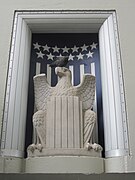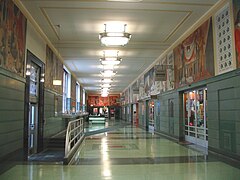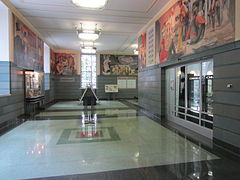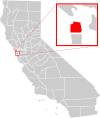
South of Market (SoMa) is a neighborhood in San Francisco, California, situated just south of Market Street. It contains several sub-neighborhoods including South Beach, Yerba Buena, and Rincon Hill.
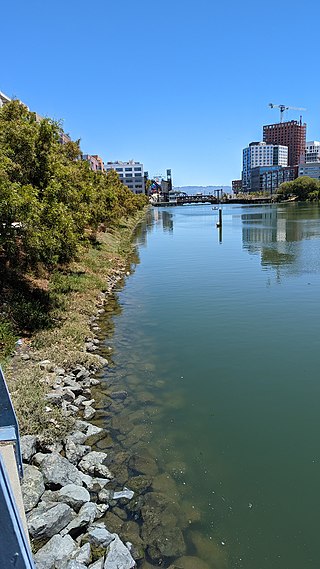
Mission Bay is a 303-acre (123 ha) neighborhood on the east side of San Francisco, California. It is bordered by China Basin to the north, Dogpatch to the south, and San Francisco Bay to the east. Originally an industrial district, it underwent development fueled by the construction of the UCSF Mission Bay campus, and is currently in the final stages of development and construction. It is the site of the Chase Center.
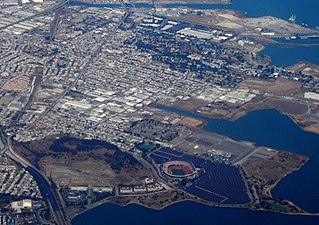
India Basin is neighborhood in the southeastern part of San Francisco, California, considered to be part of the larger Bayview–Hunters Point neighborhood.
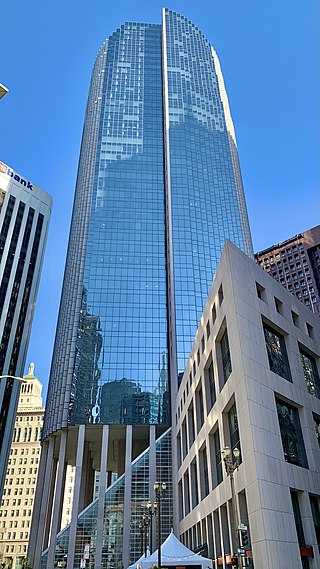
101 California Street is a 48-story office skyscraper completed in 1982 in the Financial District of San Francisco, California. The 183 m (600 ft) tower, providing 1,250,000 sq ft (116,000 m2) of office space, is bounded by California, Davis, Front, and Pine Streets near Market Street.

550 Madison Avenue is a postmodern skyscraper at Madison Avenue between 55th and 56th Streets in the Midtown Manhattan neighborhood of New York City. Designed by Philip Johnson and John Burgee with associate architect Simmons Architects, the building was completed in 1984 as the headquarters of AT&T and later became the American headquarters of Sony. The building consists of a 647-foot-tall (197-meter), 37-story office tower with a facade made of pink granite. It originally had a four-story granite annex to the west, which was demolished and replaced with a shorter annex in the early 2020s.

Anton Refregier was a painter and muralist active in Works Progress Administration Federal Art Project commissions, and in teaching art. He was a Russian immigrant to the United States.

One Rincon Hill is an upscale residential complex on the apex of Rincon Hill in San Francisco, California, United States. The complex, designed by Solomon, Cordwell, Buenz and Associates and developed by Urban West Associates, consists of two skyscrapers that share a common townhouse podium. It is part of the San Francisco Skyline and is visible from Mt. Diablo, Port of Oakland and San Francisco.

The Infinity or 300 Spear Street is a mixed-use residential condominium development in the Rincon Hill neighborhood of San Francisco, California consisting of 2 high-rise towers and 2 low-rise buildings. The four buildings contain 650 residential units. The complex is the first phase of a massive residential development encompassing two city blocks.

First National Center, formerly known as First National Bank Building, is a prominent mixed-use skyscraper in downtown Oklahoma City. The art deco tower is 406 feet tall at the roof, and is 446 feet at its spire and contains 33 floors. The building was constructed in 1931 by the First National Bank and Trust Company of Oklahoma City and has 990,000 square feet (92,000 m2) of office space.

The William J. Nealon Federal Building and United States Courthouse is a courthouse of the United States District Court for the Middle District of Pennsylvania, located in Scranton, Pennsylvania. It was completed in 1931, and was listed on the National Register of Historic Places in 2018.

The Southern Pacific Building is one of three office buildings comprising One Market Plaza along the Embarcadero in San Francisco, California. The historic 11-story, 65-metre (213 ft) building, also known as "The Landmark", was started in 1916 and completed in 1917.

The Bronx Central Annex of the United States Postal Service is a historic post office building located at 558 Grand Concourse in Concourse, the Bronx, New York, United States. The four-story structure was built from 1935 to 1937. The building was sold in 2014 and is being transformed into retail, postal service, office and restaurant space.

The San Francisco riot of 1877 was a three-day pogrom waged against Chinese immigrants in San Francisco, California by the city's majority white population from the evening of July 23 through the night of July 25, 1877. The ethnic violence which swept Chinatown resulted in four deaths and the destruction of more than $100,000 worth of property belonging to the city's Chinese immigrant population.

535 Mission Street is an office skyscraper in the South of Market district of San Francisco, California, opened in November 2014, with 27 stories rising 378 ft (115 m) above street level. It is adjacent to the Transbay Transit Center site and located on the same block as 100 First Plaza, 555 Mission Street, and 101 Second Street.
Pan American Unity is a mural painted by Mexican artist and muralist Diego Rivera for the Art in Action exhibition at Treasure Island's Golden Gate International Exposition (GGIE) in San Francisco, California in 1940. This work was the centerpiece of the Art In Action exhibit, which featured many different artists engaged in creating works during the Exposition while the public watched.

The U.S. Post Office, also known as the Berkeley Main Post Office, is a local branch of the United States Postal Service. The building, located at 2000 Allston Way Berkeley, California, was built in 1914-15.The building has been described as a "free adaptation of Brunelleschi's Foundling Hospital." Designed in the Second Renaissance Revival style, the front of the building features terra cotta arches supported by plain tuscan columns.
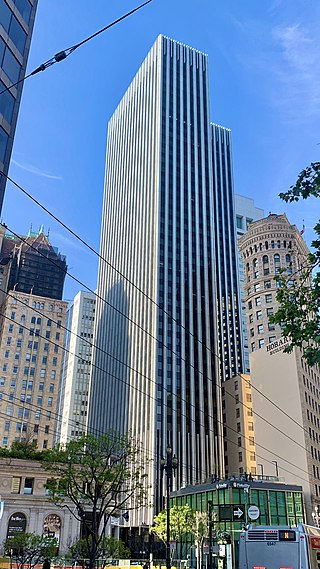
Beacon Capital Partners is an American real estate investment firm based in Boston, Massachusetts. It was founded in 1998, after Beacon Properties, Inc., Beacon's predecessor, was acquired by EQ Office in a $4 billion transaction. The company focuses on office and life science properties in major markets across the United States, including Boston, Chicago, Denver, Los Angeles, New York City, San Francisco, Seattle and Washington, D.C. It's European presence formerly included buildings in London, Paris, and Luxemburg.

Ping Yuen and North Ping Yuen form a four-building public housing complex in the north end of Chinatown, San Francisco along Pacific Avenue. In total, there are 434 apartments. The three Pings on the south side of Pacific were dedicated in 1951, and the North Ping Yuen building followed a decade later in 1961. Some of the largest murals in Chinatown are painted on Ping Yuen, which are prominent landmark buildings taller than the typical two- or three-story Chinatown buildings that date back to the early 1900s.

In 1941, Anton Refregier won the $26,000 commission for the series History of San Francisco, which are a set of 27 murals painted in the lobby of the Rincon Annex Post Office in San Francisco, California. Refregier painted the mural with casein tempera on white gesso over plaster walls, in the social realism style. Work was interrupted by World War II and restarted in 1946; the murals were completed in 1948.








